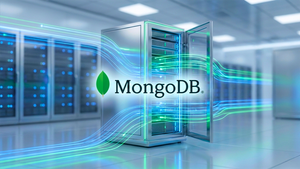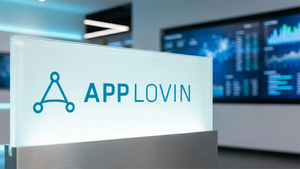
Dayton, OH – November 24, 2025 – As the global semiconductor industry surges towards a projected US$1 trillion market by 2030, driven by an insatiable demand for Artificial Intelligence (AI) and high-performance computing, a critical challenge looms large: a severe and intensifying talent gap. Experts predict a global shortfall of over one million skilled workers by 2030. In response to this pressing need, a groundbreaking collaboration between the University of Dayton (UD) and International Business Machines Corporation (NYSE: IBM) is emerging as a beacon, demonstrating a potent model for cultivating the next generation of semiconductor professionals and safeguarding the future of advanced chip manufacturing.
This strategic partnership, an expansion of an existing relationship, is not merely an academic exercise; it's a direct investment in the future of U.S. semiconductor leadership. By combining academic rigor with cutting-edge industrial expertise, the UD-IBM initiative aims to create a robust pipeline of talent equipped with the practical skills necessary to innovate and operate in the complex world of advanced chip technologies. This proactive approach is vital for national security, economic competitiveness, and maintaining the pace of innovation in an era increasingly defined by silicon.
Bridging the "Lab-to-Fab" Gap: A Deep Dive into the UD-IBM Model
At the heart of the UD-IBM collaboration is a significant commitment to hands-on, industry-aligned education. The partnership, which represents a combined investment of over $20 million over a decade, centers on the establishment of a new semiconductor nanofabrication facility on the University of Dayton’s campus, slated to open in early 2027. This state-of-the-art facility will be bolstered by IBM’s contribution of over $10 million in advanced semiconductor equipment, providing students and researchers with unparalleled access to the tools and processes used in real-world chip manufacturing.
This initiative is designed to offer "lab-to-fab" learning opportunities, directly addressing the gap between theoretical knowledge and practical application. Undergraduate and graduate students will engage in hands-on work with the new equipment, guided by both a dedicated University of Dayton faculty member and an IBM Technical Leader. This joint mentorship ensures that research and curriculum are tightly aligned with current industry demands, covering critical areas such as AI hardware, advanced packaging, and photonics. Furthermore, the University of Dayton is launching a co-major in semiconductor manufacturing engineering, specifically tailored to equip students with the specialized skills required for the modern semiconductor economy. This integrated approach stands in stark contrast to traditional academic programs that often lack direct access to industrial-grade fabrication facilities and real-time industry input, positioning UD as a leader in cultivating directly employable talent.
Reshaping the Competitive Landscape: Implications for Tech Giants and Startups
The UD-IBM collaboration holds significant implications for the competitive landscape of the semiconductor industry. For International Business Machines Corporation (NYSE: IBM), this partnership secures a vital talent pipeline, ensuring access to skilled engineers and technicians from Dayton who are already familiar with advanced fabrication processes and AI-era technologies. In an industry grappling with a 67,000-worker shortfall in the U.S. alone by 2030, such a strategic recruitment channel provides a distinct competitive advantage.
Beyond IBM, this model could serve as a blueprint for other tech giants and semiconductor manufacturers. Companies like Taiwan Semiconductor Manufacturing Company (NYSE: TSM) and Intel Corporation (NASDAQ: INTC), both making massive investments in U.S. fab construction, desperately need a trained workforce. The success of the UD-IBM initiative could spur similar academic-industry partnerships across the nation, fostering regional technology ecosystems and potentially disrupting traditional talent acquisition strategies. Startups in the AI hardware and specialized chip design space also stand to benefit indirectly from a larger pool of skilled professionals, accelerating innovation and reducing the time-to-market for novel semiconductor solutions. Ultimately, robust workforce development is not just about filling jobs; it's about sustaining the innovation engine that drives the entire tech industry forward.
A Crucial Pillar in the Broader AI and Semiconductor Landscape
The importance of workforce development, exemplified by the UD-IBM partnership, cannot be overstated in the broader context of the AI and semiconductor landscape. The global talent crisis, with Deloitte estimating over one million additional skilled workers needed by 2030, directly threatens the ambitious growth projections for the semiconductor market. Initiatives like the UD-IBM collaboration are critical enablers for the U.S. CHIPS and Science Act, which allocates substantial funding for domestic manufacturing and workforce training, aiming to reduce reliance on overseas production and enhance national security.
This partnership fits into a broader trend of increased onshoring and regional ecosystem development, driven by geopolitical considerations and the desire for resilient supply chains, especially for cutting-edge AI chips. The demand for expertise in advanced packaging, High-Bandwidth Memory (HBM), and specialized AI accelerators is soaring, with the generative AI chip market alone exceeding US$125 billion in 2024. Without a skilled workforce, investments in new fabs and technological breakthroughs, such as Intel's 2nm prototype chips, cannot be fully realized. The UD-IBM model represents a vital step in ensuring that the human capital is in place to translate technological potential into economic reality, preventing a talent bottleneck from stifling the AI revolution.
Charting the Course: Future Developments and Expert Predictions
Looking ahead, the UD-IBM collaboration is expected to serve as a powerful catalyst for further developments in semiconductor workforce training. The nanofabrication facility, once operational in early 2027, will undoubtedly attract more research grants and industry collaborations, solidifying Dayton's role as a hub for advanced manufacturing and technology. Experts predict a proliferation of similar academic-industry partnerships across regions with burgeoning semiconductor investments, focusing on practical, hands-on training and specialized curricula.
The near-term will likely see an increased emphasis on apprenticeships and certificate programs alongside traditional degrees, catering to the diverse skill sets required, from technicians to engineers. Long-term, the integration of AI and automation into chip design and manufacturing processes will necessitate a workforce adept at managing these advanced systems, requiring continuous upskilling and reskilling. Challenges remain, particularly in scaling these programs to meet the sheer magnitude of the talent deficit and attracting a diverse pool of students to STEM fields. However, the success of models like UD-IBM suggests a promising path forward, with experts anticipating a more robust and responsive educational ecosystem that is intrinsically linked to industrial needs.
A Foundational Step for the AI Era
The UD-IBM collaboration stands as a seminal development in the ongoing narrative of the AI era, underscoring the indispensable role of workforce development in achieving technological supremacy. As the semiconductor industry hurtles towards unprecedented growth, fueled by AI, the partnership between the University of Dayton and IBM provides a crucial blueprint for addressing the looming talent crisis. By fostering a "lab-to-fab" learning environment, investing in cutting-edge facilities, and developing specialized curricula, this initiative is directly cultivating the skilled professionals vital for innovation, manufacturing, and ultimately, the sustained leadership of the U.S. in advanced chip technologies.
This model not only benefits IBM by securing a talent pipeline but also offers a scalable solution for the broader industry, demonstrating how strategic academic-industrial alliances can mitigate competitive risks and bolster national technological resilience. The significance of this development in AI history lies in its recognition that hardware innovation is inextricably linked to human capital. As we move into the coming weeks and months, the tech world will be watching closely for the initial impacts of this collaboration, seeking to replicate its success and hoping that it marks the beginning of a sustained effort to build the workforce that will power the next generation of AI breakthroughs.
This content is intended for informational purposes only and represents analysis of current AI developments.
TokenRing AI delivers enterprise-grade solutions for multi-agent AI workflow orchestration, AI-powered development tools, and seamless remote collaboration platforms.
For more information, visit https://www.tokenring.ai/.





